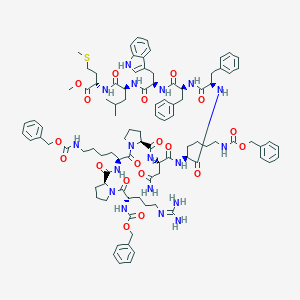

You can:
| Name | Substance-P receptor |
|---|---|
| Species | Homo sapiens (Human) |
| Gene | TACR1 |
| Synonym | NK-1 receptor Tachykinin receptor 1 TAC1R SPR Substance P receptor [ Show all ] |
| Disease | Cough Depression Depression; Anxiety Diabetes Eczema [ Show all ] |
| Length | 407 |
| Amino acid sequence | MDNVLPVDSDLSPNISTNTSEPNQFVQPAWQIVLWAAAYTVIVVTSVVGNVVVMWIILAHKRMRTVTNYFLVNLAFAEASMAAFNTVVNFTYAVHNEWYYGLFYCKFHNFFPIAAVFASIYSMTAVAFDRYMAIIHPLQPRLSATATKVVICVIWVLALLLAFPQGYYSTTETMPSRVVCMIEWPEHPNKIYEKVYHICVTVLIYFLPLLVIGYAYTVVGITLWASEIPGDSSDRYHEQVSAKRKVVKMMIVVVCTFAICWLPFHIFFLLPYINPDLYLKKFIQQVYLAIMWLAMSSTMYNPIIYCCLNDRFRLGFKHAFRCCPFISAGDYEGLEMKSTRYLQTQGSVYKVSRLETTISTVVGAHEEEPEDGPKATPSSLDLTSNCSSRSDSKTMTESFSFSSNVLS |
| UniProt | P25103 |
| Protein Data Bank | 2ksa, 6e59, 6hlo, 2ks9, 6hlp, 6hll, 2ksb |
| GPCR-HGmod model | P25103 |
| 3D structure model | This structure is from PDB ID 2ksa. |
| BioLiP | BL0101802, BL0437915, BL0437914, BL0437913, BL0434896, BL0101803, BL0101801 |
| Therapeutic Target Database | T47094 |
| ChEMBL | CHEMBL249 |
| IUPHAR | 360 |
| DrugBank | BE0000384 |
| Name | CHEMBL2304114 |
|---|---|
| Molecular formula | C97H126N18O19S |
| IUPAC name | methyl (2S)-2-[[(2S)-2-[[(2R)-2-[[(2S)-2-[[(2R)-2-[[(2S)-2-[[(2S)-4-amino-2-[[(2S)-1-[(2S)-2-[[(2S)-1-[(2S)-5-(diaminomethylideneamino)-2-(phenylmethoxycarbonylamino)pentanoyl]pyrrolidine-2-carbonyl]amino]-6-(phenylmethoxycarbonylamino)hexanoyl]pyrrolidine-2-carbonyl]amino]-4-oxobutanoyl]amino]-6-(phenylmethoxycarbonylamino)hexanoyl]amino]-3-phenylpropanoyl]amino]-3-phenylpropanoyl]amino]-3-(1H-indol-3-yl)propanoyl]amino]-4-methylpentanoyl]amino]-4-methylsulfanylbutanoate |
| Molecular weight | 1880.24 |
| Hydrogen bond acceptor | 21 |
| Hydrogen bond donor | 15 |
| XlogP | 7.8 |
| Synonyms | N/A |
| Inchi Key | ACRLIDVMMDXFLB-CKLROUHHSA-N |
| Inchi ID | InChI=1S/C97H126N18O19S/c1-62(2)53-75(84(118)107-74(46-52-135-4)93(127)131-3)108-87(121)78(56-68-58-104-70-40-21-20-39-69(68)70)111-86(120)77(55-64-31-12-6-13-32-64)110-85(119)76(54-63-29-10-5-11-30-63)109-83(117)71(41-22-24-47-102-95(128)132-59-65-33-14-7-15-34-65)105-88(122)79(57-82(98)116)112-90(124)81-45-28-50-114(81)91(125)72(42-23-25-48-103-96(129)133-60-66-35-16-8-17-36-66)106-89(123)80-44-27-51-115(80)92(126)73(43-26-49-101-94(99)100)113-97(130)134-61-67-37-18-9-19-38-67/h5-21,29-40,58,62,71-81,104H,22-28,41-57,59-61H2,1-4H3,(H2,98,116)(H,102,128)(H,103,129)(H,105,122)(H,106,123)(H,107,118)(H,108,121)(H,109,117)(H,110,119)(H,111,120)(H,112,124)(H,113,130)(H4,99,100,101)/t71-,72-,73-,74-,75-,76+,77-,78+,79-,80-,81-/m0/s1 |
| PubChem CID | 44271301 |
| ChEMBL | CHEMBL2304114 |
| IUPHAR | N/A |
| BindingDB | 50016355 |
| DrugBank | N/A |
Structure |  |
| Lipinski's druglikeness | This ligand has more than 5 hydrogen bond donor. This ligand has more than 10 hydrogen bond acceptor. This ligand is heavier than 500 daltons. This ligand has a partition coefficient log P greater than 5. |
| Parameter | Value | Reference | Database source |
|---|---|---|---|
| Change in amplitude response | -54.0 % | PMID2433443 | ChEMBL |
| Change in amplitude response | -44.0 % | PMID2433443 | ChEMBL |
| Change in amplitude response | 0.0 % | PMID2433443 | ChEMBL |
| Change in amplitude response | 17.0 % | PMID2433443 | ChEMBL |
zhanglab![]() zhanggroup.org | +65-6601-1241 | Computing 1, 13 Computing Drive, Singapore 117417
zhanggroup.org | +65-6601-1241 | Computing 1, 13 Computing Drive, Singapore 117417